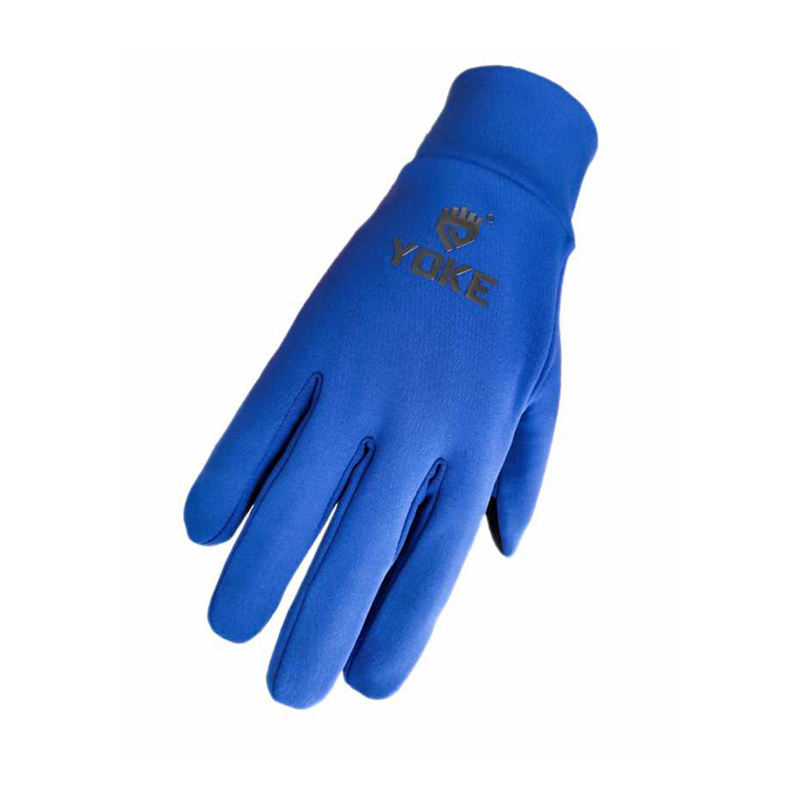An In-Depth Look at the Materials Used in Fingerless Impact Gloves
Release time:
2025-04-15
An In-Depth Look at the Materials Used in Fingerless Impact Gloves Fingerless impact gloves are essential gear for professionals engaging in tasks that require dexterity and protection. These gloves offer the unique advantage of hand mobility while safeguarding against potential impacts and abrasions. But what exactly are these gloves made of? In this article, we will delve into the materials th
An In-Depth Look at the Materials Used in Fingerless Impact Gloves
Fingerless impact gloves are essential gear for professionals engaging in tasks that require dexterity and protection. These gloves offer the unique advantage of hand mobility while safeguarding against potential impacts and abrasions. But what exactly are these gloves made of? In this article, we will delve into the materials that contribute to the performance, comfort, and safety of fingerless impact gloves.
Understanding Fingerless Impact Gloves
Before analyzing the materials, it’s crucial to understand the role of fingerless impact gloves. They are designed to provide protection to the palm and back of the hand without compromising finger mobility. This design is particularly beneficial for those in construction, manufacturing, or outdoor work, where grip and dexterity are paramount.
The Importance of Material Selection
The choice of materials in fingerless impact gloves is critical. The right materials ensure that gloves are not only comfortable but also durable and protective. Several factors influence material selection, including:
- **Protection against impacts and abrasions**
- **Comfort and breathability**
- **Flexibility and dexterity**
- **Durability and longevity**
Understanding these factors will help us explore the various materials used in the construction of fingerless impact gloves.
The Core Materials Used in Fingerless Impact Gloves
The materials employed in fingerless impact gloves can be categorized into the following:
1. Base Fabrics
Base fabrics form the foundation of fingerless impact gloves. Commonly used materials include:
1.1. Synthetic Leather
Synthetic leather is often used in glove production due to its balance of durability and comfort. It provides a leather-like feel without the weight. Synthetic leather is resistant to wear and moisture, making it ideal for rugged tasks.
1.2. Cotton and Cotton Blends
Cotton is a breathable, comfortable fabric that absorbs moisture. Cotton blends are often used for comfort and flexibility, particularly in the palm areas where grip is essential.
1.3. Nylon
Nylon is a strong, lightweight synthetic fabric that offers excellent abrasion resistance. Gloves made with nylon are often used in heavy-duty applications due to their durability.
2. Padding Materials
Padding materials enhance the protective features of fingerless impact gloves. They absorb shock and reduce the risk of injury.
2.1. EVA Foam
Ethylene-vinyl acetate (EVA) foam is a common choice for padding in impact gloves. It is lightweight, flexible, and provides excellent cushioning against impacts.
2.2. Gel Padding
Gel padding is increasingly popular due to its ability to conform to the hand's shape while providing superior shock absorption. This material is especially useful in high-impact situations.
2.3. Neoprene
Neoprene is a synthetic rubber that offers both padding and flexibility. It adds an extra layer of protection against impacts while retaining the glove's overall dexterity.
3. Protective Reinforcements
Reinforcements are crucial for enhancing the durability and protective features of fingerless impact gloves.
3.1. Thermoplastic Rubber (TPR)
TPR is often used for the protective knuckles and finger areas. It offers excellent impact resistance and flexibility, allowing for easy movement.
3.2. Kevlar® Reinforcement
Kevlar® is known for its high tensile strength and cut resistance. Gloves with Kevlar® reinforcements provide an added layer of safety, especially in environments with sharp objects.
3.3. PVC Coating
Polyvinyl chloride (PVC) is used in some gloves for its waterproof properties. Gloves with a PVC coating offer protection against liquids while maintaining grip and flexibility.
Evaluating the Performance of Fingerless Impact Gloves
When choosing fingerless impact gloves, the performance is often determined by how well the materials work together.
Comfort and Fit
A well-fitting glove enhances comfort and reduces hand fatigue. The materials used should stretch and conform to the hand's shape without restricting movement. Breathable fabrics help manage moisture, ensuring that hands remain dry during prolonged use.
Grip and Dexterity
The palm material, combined with padding, plays a significant role in grip. Textured surfaces on the glove enhance grip, allowing users to handle tools and materials confidently. The balance between protection and dexterity is vital, especially in tasks requiring precision.
Durability and Care
Durability is a significant factor, especially in industrial applications. High-quality materials should withstand daily wear and tear. Proper care, such as regular cleaning and inspection, can extend the life of fingerless impact gloves.
Innovations in Fingerless Impact Glove Materials
As technology advances, new materials and innovations are incorporated into glove design.
1. Breathable Membranes
Innovative breathable membranes are now used to enhance airflow while keeping moisture out. These membranes improve comfort during high-intensity work.
2. Smart Fabrics
Smart fabrics with embedded sensors are being developed to monitor hands' temperature and moisture levels in real time, providing feedback to the user.
3. Eco-friendly Materials
Sustainability is becoming a priority in manufacturing. Eco-friendly materials are being explored to produce gloves that are both functional and environmentally responsible.
Choosing the Right Fingerless Impact Gloves
Selecting the right gloves involves considering the specific needs of your work environment.
1. Industry Requirements
Different industries have varying requirements for hand protection. It is essential to choose gloves that meet specific safety standards relevant to your field.
2. Personal Comfort Preferences
Individual comfort is subjective. Trying on different styles and materials can help determine the best fit for your hands.
3. Functionality and Features
Evaluate the additional features, such as touchscreen compatibility, wrist support, and adjustable straps, to ensure the gloves meet your practical needs.
Common Uses of Fingerless Impact Gloves
Fingerless impact gloves have versatile applications across various fields:
1. Construction and Carpentry
In construction, workers require protection from impacts while needing the dexterity to handle tools. Fingerless impact gloves allow for both safety and precision.
2. Manufacturing and Assembly
In manufacturing settings, the gloves provide protection against cuts and abrasions while allowing workers to maintain a strong grip on components.
3. Outdoor Sports and Activities
For outdoor enthusiasts, fingerless impact gloves enhance grip and protection while allowing full finger mobility for activities like biking or climbing.
Frequently Asked Questions (FAQs)
1. What are fingerless impact gloves used for?
Fingerless impact gloves are primarily used to protect the hand from impacts while allowing full finger movement for tasks that require dexterity.
2. Are fingerless impact gloves washable?
Yes, most fingerless impact gloves can be washed. However, it is essential to follow the manufacturer's care instructions for the best results.
3. How do I know what size to choose?
To determine the correct size, measure the circumference of your hand and refer to the sizing chart provided by the manufacturer.
4. Can I use touchscreen devices while wearing fingerless gloves?
Many fingerless impact gloves are designed with touchscreen compatibility, allowing users to operate devices without removing their gloves.
5. Are there any safety standards for fingerless impact gloves?
Yes, many regions have safety standards for work gloves, including those for impact resistance. It is crucial to choose gloves that meet these standards for adequate protection.
Conclusion
In conclusion, fingerless impact gloves are a vital component of hand protection in various work environments. The materials used in their construction are carefully chosen to enhance comfort, durability, and safety. As advancements in technology continue to influence glove design, users can expect even more innovative features in the future. Whether in construction, manufacturing, or outdoor activities, selecting the right fingerless impact gloves can significantly impact performance and safety. Understanding the materials involved is the first step in making an informed choice that meets your specific needs.
Key words:
Mechanical gloves Safety gloves Work gloves





